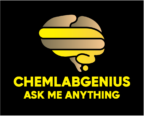| Aspect | Chromatography | Spectroscopy |
|---|---|---|
| Definition | Separation technique based on differential distribution in stationary and mobile phases. | Technique studying the interaction between matter and electromagnetic radiation. |
| Principle | Separation based on affinities for stationary and mobile phases. | Study of absorption, emission, or scattering of light by substances. |
| Types | Gas Chromatography (GC), Liquid Chromatography (LC), Thin-Layer Chromatography (TLC), etc. | Ultraviolet-Visible (UV-Vis) Spectroscopy, Infrared (IR) Spectroscopy, Nuclear Magnetic Resonance (NMR) Spectroscopy, Mass Spectrometry (MS), etc. |
| Applications | Separation and analysis of organic and inorganic compounds in various fields. | Structural elucidation, quantitative analysis, and identification of functional groups in compounds. |
| Output | Chromatogram – Visual representation of separated components as peaks. | Spectrum – Plot of intensity of radiation as a function of wavelength or frequency. |
| Common Usage Areas | Pharmaceuticals, environmental analysis, biochemistry. | Chemistry, physics, biochemistry, environmental science. |
Chromatography FAQs:
1. What is chromatography used for?
- Chromatography is used for the separation and analysis of complex mixtures, helping to identify and quantify individual components.
2. How does chromatography work?
- Chromatography works based on the differential distribution of components between a stationary phase and a mobile phase, leading to their separation.
3. What are the main types of chromatography?
- Common types include Gas Chromatography (GC), Liquid Chromatography (LC), and Thin-Layer Chromatography (TLC).
4. What is a chromatogram?
- A chromatogram is a visual representation of separated components in chromatography, displayed as peaks on a graph.
5. Where is chromatography applied in science?
- Chromatography is widely applied in pharmaceuticals, environmental analysis, biochemistry, and forensic science.
Spectroscopy FAQs:
1. What is spectroscopy used for?
- Spectroscopy is used to study the interaction between matter and electromagnetic radiation, providing information about molecular structure and composition.
2. How does spectroscopy work?
- Spectroscopy involves measuring the absorption, emission, or scattering of light by a substance, producing a spectrum.
3. What are the main types of spectroscopy?
- Common types include Ultraviolet-Visible (UV-Vis) Spectroscopy, Infrared (IR) Spectroscopy, Nuclear Magnetic Resonance (NMR) Spectroscopy, and Mass Spectrometry (MS).
4. What is a spectrum in spectroscopy?
- A spectrum is a plot of the intensity of radiation as a function of wavelength or frequency, providing characteristic patterns for different compounds.
5. Where is spectroscopy applied in science?
- Spectroscopy finds applications in chemistry, physics, biochemistry, and environmental science for structural elucidation, quantitative analysis, and identifying functional groups.
Combined FAQs:
1. Can chromatography and spectroscopy be used together?
- Yes, chromatography and spectroscopy are often used together. Chromatography separates components, and spectroscopy identifies and characterizes them.
2. How do chromatography and spectroscopy benefit scientific research?
- They provide valuable tools for analyzing complex samples, identifying compounds, and understanding the molecular characteristics of substances.
3. What skills are required for working with chromatography and spectroscopy?
- Proficiency in laboratory techniques, data analysis, and an understanding of the principles behind chromatography and spectroscopy are essential skills.
